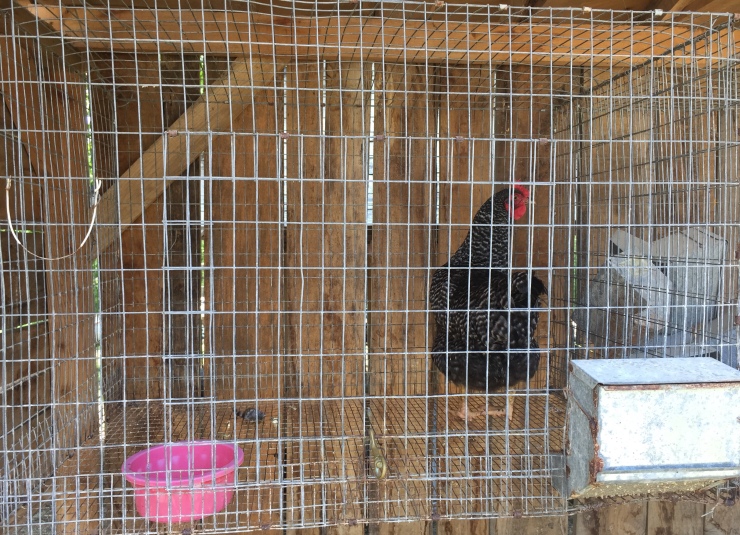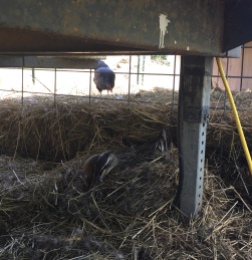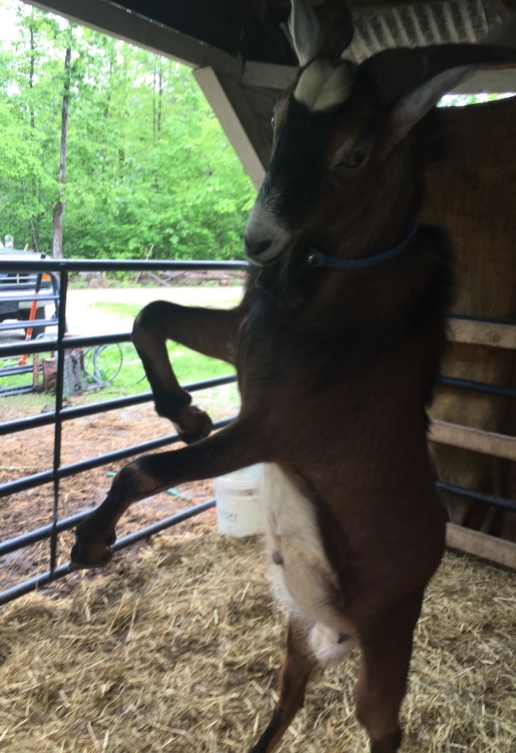
“Ohh…” It’s the sound of poorly concealed shock and awe we sometimes get when I quote our eggs at $3.00/dozen. But here’s the things, we’re not trying to bring you the best price on eggs, we’re trying to bring the best value, and the highest quality. In order to achieve that goal our chickens are free ranged, and our flock tightly managed. We carefully oversee and manage the whole process from hatching and flock care, to egg processing and packaging, to record keeping and price sourcing.
When we started the only thing we sold here was eggs, that was right after there had been large outbreak of some chicken disease. Many of the big egg producers had to kill off all their stock, and consequently there was a large jump in egg prices while we waited for more laying age chickens to be produced. The lowest quality eggs in the store were going for over $2.80/dozen. If anyone balked at our price we could tell legitimately tell them that the wouldn’t find a much better price even from the Walmart. Now store eggs are going for around $0.33/dozen and I frequently find them on sale for $0.18. But we haven’t lowered our price, and we won’t because we won’t lower our quality.
So, in answer to the question “can’t you do any less on them?”
No, I can’t and here’s why.
The chickens have to eat. We free range ours which gives them the greatest and most natural nutrition, but they still need supplementation for optimal health and production. We feed a layer mash which runs $12.00 for fifty pounds. How much we feed them varies through the year, but towards winter it’s approximately ten pounds a day.
While the layer mash should ideally provide everything the need, they are going through a lot of calcium to make an eggshell nearly everyday, so we also give them some ground oyster shells at $10.00 for fifty pounds to peck at.
On top of feeding them we have to kill everything that wants to eat them. Everybody loves chicken, from parasites to bears. The chickens have to be wormed regularly. Wormer costs $16.00 for five pounds. We use a pelletized wormer which does not contaminate the eggs. They have to be fed the pellets three consecutive days each worming period
There are also mites and chicken lice, these can actually kill them if they get out of control. Chickens naturally like to take dust baths, so we use a half barrel of diatomaceous earth for them to take a bath in. Diatomaceous earth is a fine dust that on a microscopic level is very sharp. It doesn’t hurt the chickens, but it cuts up the parasites causing them to dehydrate and die.
Keeping worms and mites from killing them isn’t so bad. We keep them on a schedule, stay on top of any warning signs, and nothing gets out of hand. Stopping big things from killing them is harder. A stray dog did in two a few weeks ago. No one ever claimed the dog so we couldn’t get any compensation. Going rate for your dog killed a chicken is $12.00/bird. So there’s $24.00 gone that we wouldn’t have lost if we were selling eggs from caged or pastured chickens.
Possums, coons, coyotes, foxes, weasels, hawks, and owls also love chicken. Most of these come out at night, usually while we’re sleeping. There isn’t a lot you can do standing there naked in the barn wielding a pitchfork in the darkness. Whatever it was is usually gone by then, all that’s left if feathers.
We actively manage our flock for optimal egg production, this means not just insuring that all the hens are healthy, but that they are all still producing well. Occasionally one of the hens will go broody. This means instead of laying an egg and walking away she decides she should sit on them and hatch them out. While she’s sitting and raising the chicks she’ll lay no eggs so this is not desirable. To make her go back to egg laying we put her in a cage for a few days. During this time she has to be fed separately and watered several times a day.
Currently I am checking all our hens to make sure they’re laying since our records indicate we have some slackers. Every evening I catch a hen, put her in the cage and give her two to three days to lay and egg. If she lays and egg she gets a green band on her leg. No egg and she gets a red band. Once I move through the whole flock the red band birds will get one more chance before turning into soup.
When it’s time to gather the eggs it can be something of a hunt. Usually they lay in the same places, sometimes they change their minds and hide eggs other places. We put ceramic eggs in their nests to make them think that it’s a safe place to lay (chickens don’t count well), but eventually they catch on and kick the fake egg out of the nest and across the yard.
They like to lay eggs in Eugene’s stall. He’s feeling very mature now that he’s a year old and is trying out dominance. He tapped me with his horns the other day to see what I’d do about it. I kicked his legs out from under him, dragged him to the ground by his beard and laid on top of him.
Many people think that once the eggs are in the basket that’s it, you put them in a carton and they’re ready to sell. But here, that’s not it. All our eggs get washed in hot water and then sorted. We sort out the less desirable eggs to eat ourselves. Stained, cracked, small, or duck eggs go in our carton. In addition, we guarantee that all our eggs are large eggs. That’s not just made up advertising. There is a nation wide standard for what constitutes a large egg, it’s got to weigh at least 56.7 grams. We periodically weigh our eggs, and check our total carton weight to make sure that we are meeting this standard.
Local law requires our eggs be sold refrigerated and in new, labeled, cartons. We are blessed to have a wonderful extension center that lets us buy our cartons from them at cost. This comes out to 24 cents per carton, which is significantly less than we would pay if we had to order them ourselves.
But even once the eggs are in the fridge that isn’t the end. We keep detailed records both on our flock and on our gains and expenses. Every egg is counted, and every month’s production totaled and graphed.

Once you add it all up (and we do), if I get paid Kentucky minimum wage for my labor ($7.25/hour) then each carton of eggs is $3.22.
I like having chickens. I like sitting out in the barn and listening to them, I like how they follow me around as I do chores, and I love having fresh eggs. They’re happy chickens’ and I’m glad for that, but ultimately this isn’t a hobby farm, and it’s not a chicken sanctuary. So no, we can’t lower our prices, because we won’t lower our standards.

















I will buy a dozen of your eggs at the going price!!! Good job Audrey! Pati Forrest
LikeLike